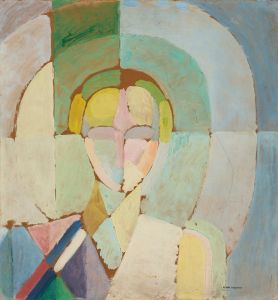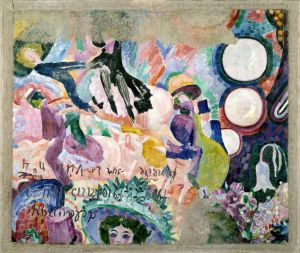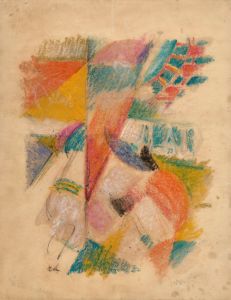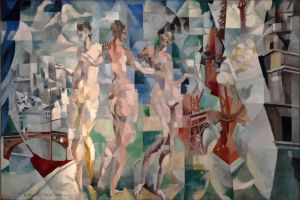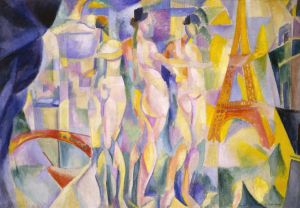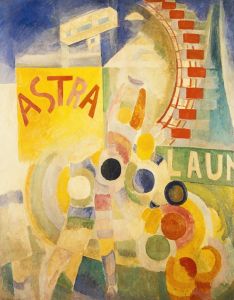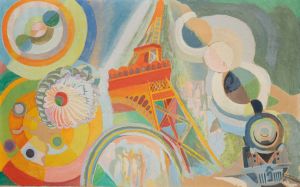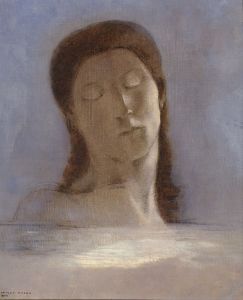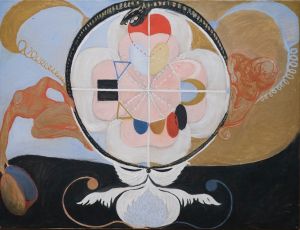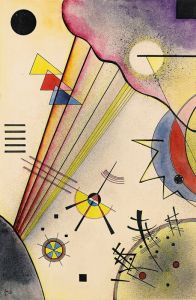
Rythme sans fin
A hand-painted replica of Robert Delaunay’s masterpiece Rythme sans fin, meticulously crafted by professional artists to capture the true essence of the original. Each piece is created with museum-quality canvas and rare mineral pigments, carefully painted by experienced artists with delicate brushstrokes and rich, layered colors to perfectly recreate the texture of the original artwork. Unlike machine-printed reproductions, this hand-painted version brings the painting to life, infused with the artist’s emotions and skill in every stroke. Whether for personal collection or home decoration, it instantly elevates the artistic atmosphere of any space.
"Rythme sans fin" (Endless Rhythm) is a painting by the French artist Robert Delaunay, created in 1934. Delaunay was a prominent figure in the development of abstract art and a key proponent of the Orphism movement, which emphasized the use of strong colors and geometric shapes to convey a sense of rhythm and movement.
The painting "Rythme sans fin" is a quintessential example of Delaunay's mature style, characterized by its vibrant color palette and dynamic composition. The work features a series of interlocking circular forms that create a sense of perpetual motion, embodying the concept of endless rhythm suggested by the title. The use of overlapping circles and the interplay of colors are designed to evoke a sense of depth and movement, drawing the viewer's eye around the canvas in a continuous loop.
Delaunay's approach to color was heavily influenced by the scientific theories of color and light, particularly the work of Michel-Eugène Chevreul and his law of simultaneous contrast. This theory posits that the perception of a particular color is affected by the colors surrounding it, an idea that Delaunay explored extensively in his work. In "Rythme sans fin," the juxtaposition of complementary colors enhances the vibrancy of the painting, creating a dynamic visual experience.
The painting is also notable for its exploration of the relationship between form and color. Delaunay believed that color could be used independently of form to create a sense of depth and movement. This idea was a departure from traditional approaches to painting, which often relied on line and form to define space. In "Rythme sans fin," the circular forms are defined primarily by their color, with the boundaries between shapes often blurred, creating a sense of fluidity and motion.
"Rythme sans fin" reflects Delaunay's interest in modern technology and its impact on human perception. The painting's dynamic composition and vibrant colors can be seen as a response to the rapid changes in society brought about by technological advancements in the early 20th century. Delaunay was fascinated by the way technology, such as electric lighting and aviation, transformed the experience of space and time, and he sought to capture this new reality in his work.
The painting is part of a series of works that Delaunay created in the 1930s, exploring the theme of rhythm and movement. These works are considered some of his most important contributions to abstract art and have been influential in the development of modernist painting. "Rythme sans fin" is held in the collection of the Musée National d'Art Moderne in Paris, where it continues to be celebrated for its innovative approach to color and form.
Overall, "Rythme sans fin" is a testament to Robert Delaunay's pioneering vision and his ability to capture the dynamic energy of the modern world through abstract art. The painting remains an important work in the history of modern art, exemplifying the principles of Orphism and Delaunay's unique approach to color and composition.





